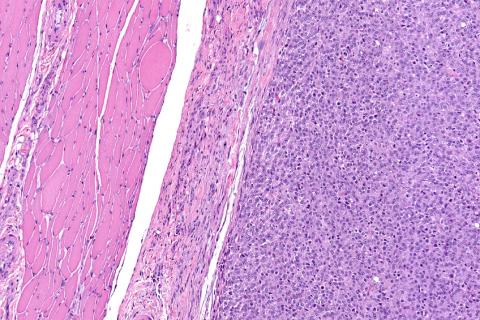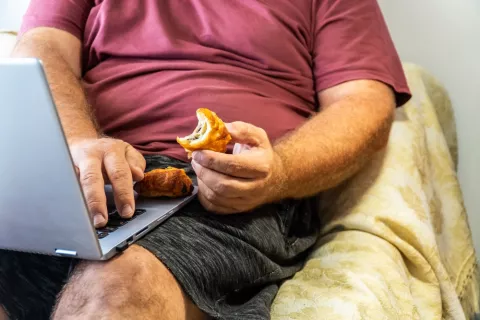
Rhabdomyosarcoma (RMS) is a type of soft tissue sarcoma, a cancer that affects tissues such as muscle, tendon, or cartilage anywhere in the body. Rhabdomyosarcomas are aggressive and usually grow rapidly and can spread (metastasize) to other areas of the body. These tumors are the most frequent soft tissue cancer in the pediatric population, and although they can appear at any age, most cases occur in children from two to six years of age, or in adolescents from 15 to 19 years of age.
Treatment of this neoplasia usually includes chemotherapy, surgery and radiotherapy, which are especially hard on children. Now, a novel therapy could offer hope for a cure for these patients, avoiding so much pain and suffering. For six years, Professor Christopher Vakoc at the Cold Spring Harbor Laboratory has pursued the goal of transforming sarcoma cells into regularly functioning tissue cells, that is, converting cancer cells into healthy cells.
This treatment method is known as differentiation therapy, and no one knows if it could ever work in rhabdomyosarcoma, but while it may be decades before it can be used in the clinic, thanks to Vackoc’s lab, it seems like a real possibility. “Every successful drug has its origin story, and research like this is the foundation from which new drugs are born,” says Vakoc. The research has been published in the Proceedings of the National Academy of Sciences.
Gene editing to turn tumors into healthy cells
Vakoc and his team designed a new genetic screening technique. Using genome-editing technology, they searched for genes that, when disrupted, would force rhabdomyosarcoma cells to become muscle cells. That’s when a protein called NF-Y emerged. With NF-Y deteriorated, the scientists witnessed an amazing transformation. “Cells literally become muscle,” says Vakoc. “The tumor loses all the attributes of cancer. They are changing from a cell that just wants to make more of itself to cells dedicated to contraction. Because all its energy and resources are now devoted to contraction, it can’t multiply again “.
“The tumor loses all the attributes of cancer and the cells literally become muscle”
This new relationship between NF-Y and RMS may trigger the chain reaction needed to bring differentiation therapy to patients, and would not only be useful in fighting rhabdomyosarcoma, but this technology could be applicable to other types of cancer. If so, one day scientists may figure out how to turn other tumors into healthy cells. “This technology can make it possible to take any cancer and find out how to differentiate it,” explains Vakoc. “This could be a key step in making differentiation therapy more accessible.”
Previously, Vakoc and his team had been able to transform Ewing sarcoma cells into cells of healthy tissue. The experiments that led to the discoveries of Ewing’s sarcoma and RMS were supported by local families who had lost loved ones to these cancers. “They got together and funded us to try to find, somewhat desperately, a new therapeutic strategy,” Vakoc said.
Those families and Christopher Vakoc’s lab may now be the heroes of a new origin story for an effective therapy: a scientific breakthrough that could one day help save children’s lives and revolutionize cancer treatment as we know it.















